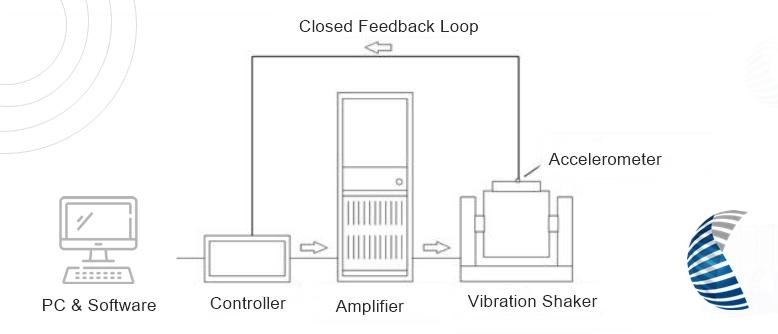What equipment is required for vibration testing?
Vibration testing requires specialised equipment to generate and measure vibrations and analyse the data obtained from the testing process. The specific equipment required depends on the type of vibration testing being performed, but there are some essential components that are typically needed for most types of vibration testing.
Vibration Test System (VTS): The VTS is the primary piece of equipment used in vibration testing. It consists of a vibration shaker or vibration sliptable that generates vibrations in a controlled and repeatable manner. The VTS is controlled by a vibration controller that sends signals to the shaker or actuator to generate the desired vibration profile.
Accelerometers: Accelerometers are sensors that are used to measure the acceleration of the system or component being tested. They are typically mounted on the system or component at various locations to measure the vibrations at different points. The data obtained from the accelerometers is used to determine the response of the system or component to the applied vibrations. The response signals from the accelerometers are fed back to the vibration controller allowing the controller to adjust its output to ensure that the required demand is met on the VTS.
Power Amplifier: A power amplifier is used to amplify the signal from the vibration controller and drive the shaker or actuator. The power amplifier must be capable of providing the required power to generate the desired vibration levels.
Data Acquisition System (DAS): The DAS is used to collect and record data from the accelerometers and other sensors used in the testing process. The DAS typically includes an analog-to-digital converter (ADC) to convert the analog signals from the sensors to digital signals that can be processed by a computer.
Computer and Software: The computer and software are used to control the VTS and vibration controller, collect and analyse data from the DAS, and generate reports on the results of the testing. The software typically includes features for setting up the test parameters, generating the vibration profile, and analysing the data obtained from the testing process.
Fixtures and Mounting Hardware: Fixtures and mounting hardware are used to secure the system or component being tested to the shaker or vibration table. These components must be designed to withstand the vibrations generated during the testing process and ensure that the system or component is securely mounted to the VTS.
Environmental Chamber: An environmental chamber may be required for some types of vibration testing. The chamber is used to simulate the temperature and humidity conditions that the system or component may experience in real-world environments.
When it comes to purchasing vibration test equipment, it's important to find a partner you can trust. Rather than trying to navigate the world of test equipment on your own, working with a knowledgeable and experienced supplier can ensure that you get the system that perfectly suits your needs. At CentraTEQ, we specialise in vibration testing and we're committed to helping our customers find the solutions that work best for them. Our team of experts will work with you to understand your specific requirements and recommend the equipment that meets your needs, from shakers and controllers to data acquisition systems and more. Plus, with our extensive experience in the industry, we can provide valuable insights and guidance.
Contact us today to learn more about our equipment and services.

